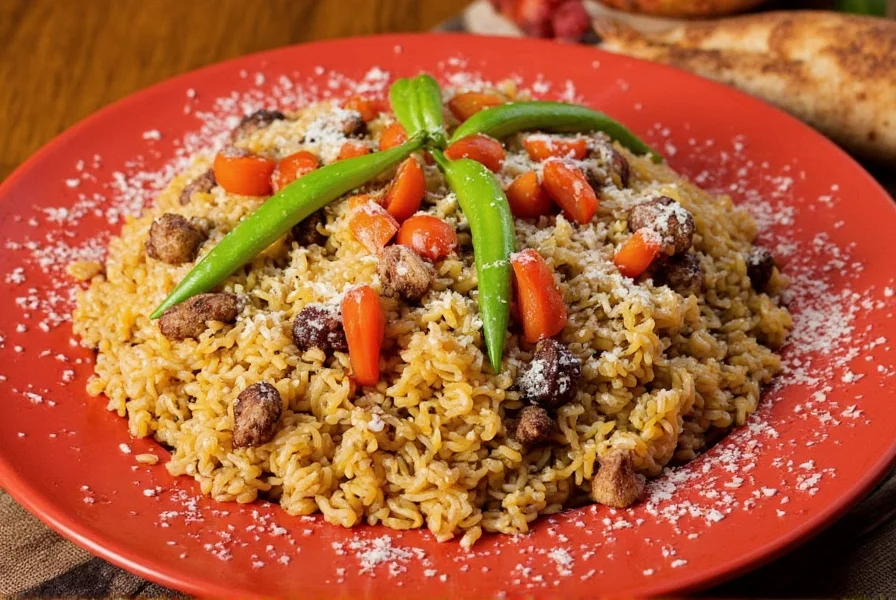Why Brazilian Food in Brazil Is a Spice Lover’s Dream Come True!
Brazil may be known for its samba, sun-drenched beaches, and Carnival parades—but for those who love bold flavors and vibrant culinary traditions, it's also one of the most exciting spice playgrounds on Earth. In this article, we're diving deep into Brazilian food in Brazil, uncovering how spices shape regional dishes, what makes them unique, and where you can experience the best flavors across this diverse country.
Table of Contents
- The Spicy Roots of Brazilian Cuisine
- Regional Spice Breakdown: From North to South
- 7 Must-Try Spiced Dishes You Can’t Miss in Brazil
- Spice Buying Guide: Take a Taste of Brazil Home with You
- Pro Tips: How to Cook Brazilian-Inspired Dishes at Home
- Conclusion: Why Brazilian Food in Brazil Deserves a Spot on Your Spice Map
The Spicy Roots of Brazilian Cuisine
Brazilian cuisine is a colorful tapestry woven from Indigenous, Portuguese, African, and immigrant influences. Unlike some cuisines that rely on a single flavor profile, Brazilian food celebrates diversity—especially when it comes to spices.
Indigenous peoples introduced native ingredients like annatto (urucum), chili peppers, and cassava. Portuguese colonizers brought black pepper, garlic, and herbs like parsley and coriander. Meanwhile, enslaved Africans contributed fiery heat through malagueta peppers and complex spice blends like dendê oil (palm oil), which adds both flavor and vibrant color.
Regional Spice Breakdown: From North to South
Because Brazil is so vast, each region has developed its own take on spicing up food. Here's a quick comparison:
| Region | Main Spices & Ingredients | Signature Dishes |
|---|---|---|
| Northeast | Malagueta pepper, dendê oil, coconut milk | Mocotó, Caruru, Baião de Dois |
| North | Tucupi sauce, jambu, urucum | Tacacá, Vatapá |
| Central-West | Cerrado spices, lemon, coriander | Pirarucu, Pequi chicken |
| Southeast | Garlic, bay leaf, saffron | Feijoada, Virado à Paulista |
| South | Chimichurri, smoked paprika, yerba mate | Churrasco, Barreado |
7 Must-Try Spiced Dishes You Can’t Miss in Brazil
- Feijoada – The national dish, rich with black beans, pork, and seasoned with garlic, bay leaf, and pepper.
- Tacacá – A spicy soup from the Amazon made with tucupi sauce and jambu leaves.
- Caruru – A Yoruba-inspired stew of okra, shrimp, onions, and hot peppers, usually served during religious festivals.
- Vatapá – A creamy bread-based paste infused with peanuts, shrimp, and palm oil.
- Mocotó – A hearty stew made with cow’s feet, tomatoes, and chilies.
- Barreado – Slow-cooked beef from Santa Catarina, marinated in vinegar, cumin, and peppers.
- Quibebe – A sweet and spicy pumpkin puree with peanuts and red pepper.
Spice Buying Guide: Take a Taste of Brazil Home with You
If you’re inspired to bring some of Brazil’s magic into your kitchen, here’s your go-to guide for must-have spices and products:
| Product | Description | Features | Use Cases | Target Audience |
|---|---|---|---|---|
| Dendê Oil | Deep orange-red palm oil used in Northeastern dishes | High smoke point, intense color, strong nutty aroma | Rice, stews, seafood, sauces | Home cooks, fusion chefs, spice enthusiasts |
| Malagueta Pepper | Fiery fresh or dried chili with citrusy heat | Scoville scale: ~50,000–100,000 units | Hot sauces, marinades, condiments | Heat lovers, street food fans |
| Tucupi Sauce | Acidic yellow sauce made from fermented manioc juice | Unique tartness, slight bitterness | Tacacá, grilled meats, fish | Curious foodies, Amazon culture lovers |
| Urucum Powder | Annatto seed powder used for natural coloring and mild spice | Earthy, slightly peppery taste | Marinades, rice, stews | Health-conscious cooks, vegetarians |
| Pequi Oil | Aromatic oil extracted from the pequi fruit native to Central Brazil | Fruity, floral, slightly bitter notes | Grilled chicken, rice, stews | Adventure eaters, sustainability-focused cooks |

Pro Tips: How to Cook Brazilian-Inspired Dishes at Home
- Don’t skip the aromatics: Garlic, onion, and green bell peppers form the base of most Brazilian dishes. Sauté them well before adding other ingredients.
- Layer your spices: Add spices in stages—for example, use whole peppercorns early and crushed chili at the end for more punch.
- Balance heat with sweetness: Many Brazilian dishes pair hot spices with tropical fruits like mango, banana, or even coconut cream.
- Try different oils: Experiment with using olive oil, vegetable oil, or palm oil depending on the region you’re cooking from.
- Go slow: Some recipes, like Feijoada or Barreado, benefit from low-and-slow cooking methods that allow spices to develop deeply over time.
Conclusion: Why Brazilian Food in Brazil Deserves a Spot on Your Spice Map
Brazilian food in Brazil isn’t just about flavor—it’s a celebration of history, culture, and biodiversity. Whether you're biting into a plate of Feijoada in Rio or slurping down a spicy Tacacá in Belém, every meal tells a story shaped by centuries of spice trade, migration, and adaptation.
So next time you're craving something new in the kitchen—or planning your next travel adventure—remember that Brazilian cuisine offers a bold, beautiful world of spice waiting to be explored. Pack your pots, stock up on dendê oil, and let Brazil’s flavors ignite your senses.
Ready to spice up your life? Try one of these Brazilian spice packs today!
- Brazilian Heat Box: Includes malagueta peppers, dendê oil, and tucupi sauce
- Amazon Flavor Kit: Tucupi, jambu, and pequi oil combo
- Feijoada Essential Bundle: Bay leaf, black pepper, garlic, and dried chili mix










 浙公网安备
33010002000092号
浙公网安备
33010002000092号 浙B2-20120091-4
浙B2-20120091-4